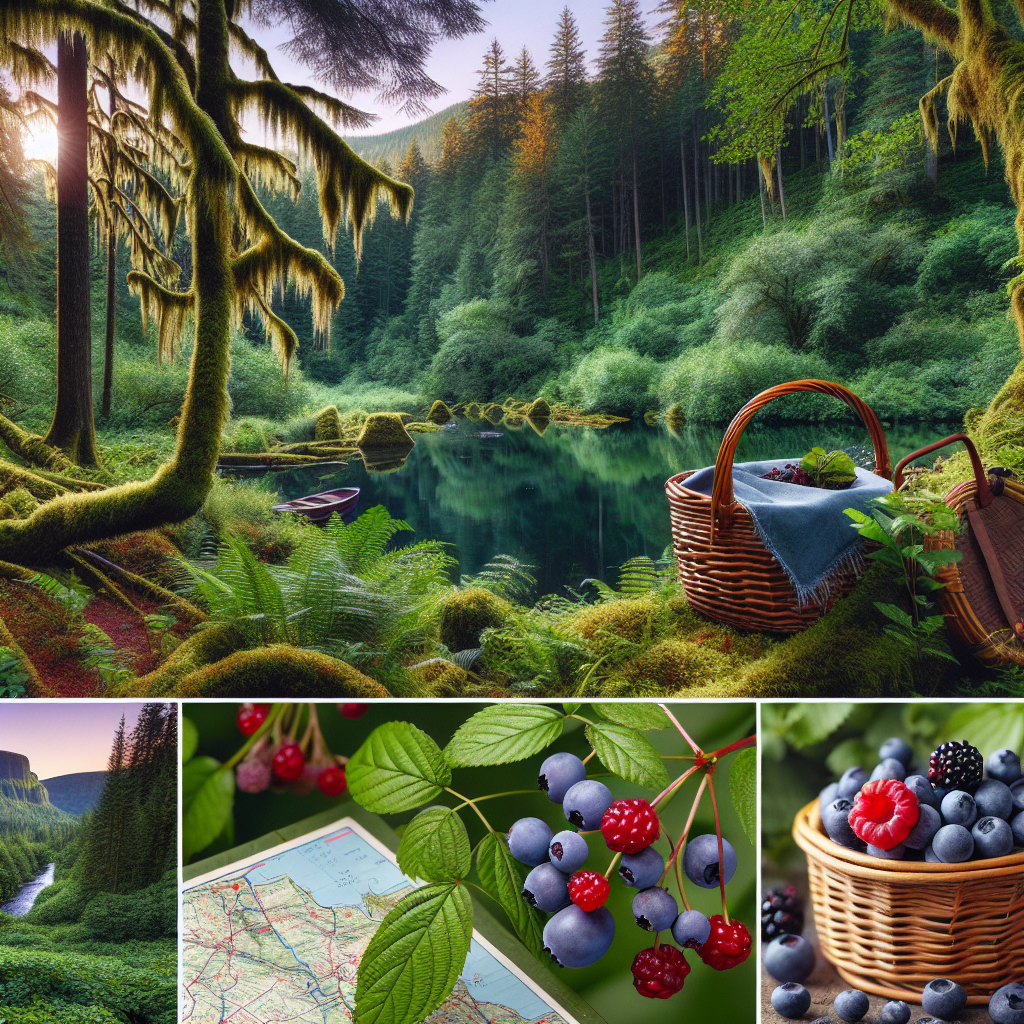Title: A Locals’ Guide on How to Forage for Wild Berries Safely in Beautiful Oregon
Introduction
Tucked away in the mystical Pacific Northwest, Oregon is a trove of nature’s bounty. It is a place where the aroma of ripening wild berries hangs heavy in the air during the summer months. But while Oregon’s wild berries are a delight, there’s more to foraging them than just wandering into the woods. Here are insider tips and recommendations borne out of many a fruitful Oregonian summer.
Knowing Your Berries
The first and the most critical step while foraging wild berries is to identify them correctly. Oregon is home to a variety of delectable wild berries, including huckleberries, marionberries, salmonberries, Oregon grape berries, thimbleberries, and elderberries. Although they may look similar, there are distinguishing features.
For example, huckleberries have small, round fruits that are dark-blue or black, while marionberries have shining blackberry-like fruits. But wanna tell you something – unlike blackberries, marionberries come with a flavor that’s uniquely tart and sweet. And don’t mistake elderberries for huckleberries. Elderberries are tiny, purplish-black berries that grow in clusters. It’s all about familiarity!
Safety is paramount, though. Some berries, like holly berries and baneberries, are harmful when ingested. Familiarize yourself with the look of toxic berries – a good place to start is at the Oregon State University’s extension service website, which offers excellent identification resources.

Know When to Forage
Timing is the next important thing. Different berries ripen at different times throughout the warmer months in Oregon. Huckleberries are usually available in late summer and early fall (think end of August to early October). Raspberry lovers should head to the trails around mid-June to late July – Coopers Spur trail on Mount Hood is a local favorite. Marionberries ripen a bit earlier, and you often find them sweet and juicy in early July around the old evacuation trail in Rogue River-Siskiyou National Forest.
What to Bring
Remember what we always say here in Oregon – “There is no bad weather, only bad clothes.” Always dress for the weather, keeping in mind that Oregon’s coastal regions are famously fickle. Bring layers and waterproof items. Gloves will protect your hands from thorns and insects.
And for storing your gathered bounty? Reusable containers or cloth bags work best. They allow the berries to breathe and help prevent them from getting squashed. Don’t forget to bring plenty of water to stay hydrated and maybe a hat to shield your face from the Oregon sun (it does come out occasionally!).
Respecting the Land
Every true Oregonian knows that the woods and wilds are not just our playground, but also our responsibility. Always follow the leave-no-trace principle. Additionally, it’s vital to leave some berries behind for wildlife because for them, it’s not a tasty summer treat but a survival necessity. Some areas, like the Mount Pisgah Arboretum, even have strict policies on foraging, so be sure to always check local regulations.
About Private Lands and Permits
Rummaging around someone else’s property without permission is a big no-no. If you are unsure, check the Oregon state GIS website to see if the land is publicly owned. Some public lands, such as national forests, require permits for foraging. It’s always safest to check with local ranger stations or the Bureau of Land Management.
Practice Safe Foraging
Ever heard the phrase “leaves of three, let it be”? That’s poison oak, a plant Oregonians are wary of as they explore. Wearing long sleeves and pants can save you from a nasty, itchy rash. Additionally, ticks are common in wooded areas and can carry Lyme disease, so conduct a full-body tick check post the forage. Always be cautious around river banks because currents in the Willamette and Snake river can be very swift.
Ending Note
Foraging in Oregon is an experience – the dense green forests, the wild roaring rivers, and the inviting trails. It connects you with the land in a manner few other activities do. Start with these guidelines, and with each trip, you’ll discover more beloved patches of berry paradise.
By all means, enjoy the treasure hunt! Savor the tangy excitement of plucking a dew-kissed berry. Spread a blanket near a gurgling brook and relish a homemade berry pastry. After all, Oregon’s wild berries aren’t just about flavor but about the shared experiences, tales, and the rhythms of life in this fantastic landscape that locals love so much.
And remember, as we say here – you’re never lost in Oregon, you’re always on an adventure. Happy foraging!
